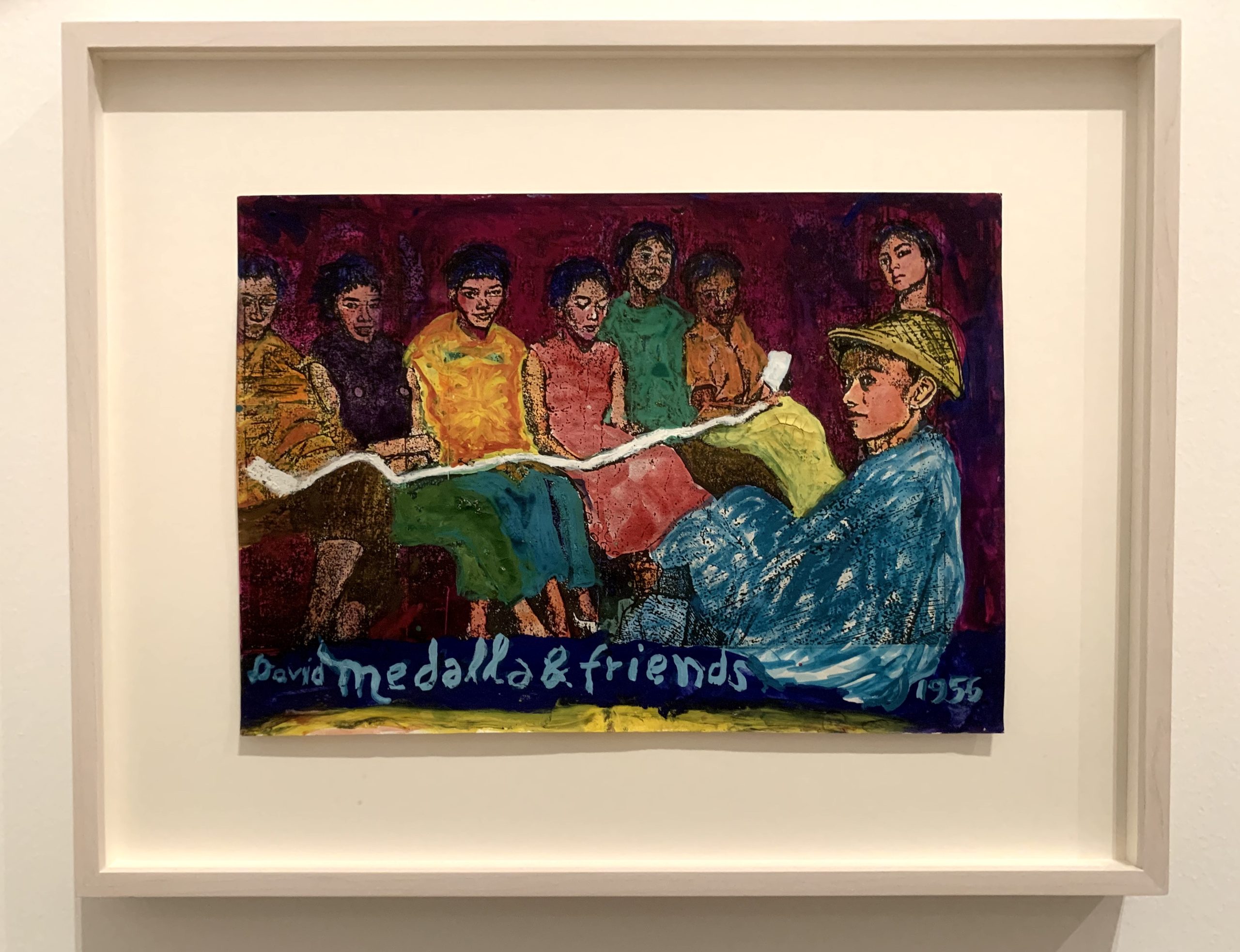LOS ANGELES — In Conversation with the Cosmos is the first comprehensive exhibition of the work of late Filipino artist David Medalla, who passed away in 2020, and the only to date that considers his art within the context of his gay identity. Although he is best known for his 1960s “biokinetic” sculptures that simulate organic processes, this show at the Hammer Museum documents his art and related activities from the 1950s through the 2010s. Considering Medalla to be an “anti-institution” artist, curator Aram Moshayedi has assembled an intriguing collection of paintings, drawings, collages, sketchbooks, sculptures, photographs, videos, and ephemera, bringing a sense of cohesion to the disparate elements of the artist’s career. The exhibition reveals that Medalla was dedicated to collaboration, and that it was a driving force in his work. A no less enlightening aspect of his oeuvre is the sometimes overt, sometimes coded references to homoeroticism, and the joy he felt from his relationship with Adam Nankervis, his partner in art, love, and life.
Medalla frames himself as the proud leader of a creative community in his early painting “David Medalla & Friends” (1956), a charming, colorful self-portrait with fellow members of a poetry club he founded in Manila. After moving to London in 1963, he co-founded Signals, a group of like-minded artists, curators, and critics. During this period of idea cross-fertilization, he penned a manifesto about creating sculptures with human attributes, such as breathing and perspiring, which led in turn to a series of proposals for kinetic sculptures using elements including sand, mud, and soap bubbles. “Cloud Canyon” (2017), for instance, is a later version of one of his 1960s bubble machines, clusters of plastic tubes that emit soap suds. The sculpture was inspired by Medalla’s memories of a rice-based dessert his mother would make, as well as beer froth, and the blood foaming from the mouth of a wounded soldier that he witnessed as a young child during World War II. On top of those disparate sources, these sculptures are phallic and, when foaming, suggest ejaculation.
In the late 1960s, Medalla started a short-lived experimental theater commune and initiated A Stitch in Time (1968–2019), a participatory art project that involved giving handkerchiefs embroidered with text messages to former lovers, along with needle and thread. In the 1970s, he turned toward political activism, protesting Philippine martial law and championing African liberation movements by collaging news clippings, drawings, commentary, and graffiti-style text into works such as “Withdraw All Gestapo” (1972).
After moving to New York in 1989, Medalla met Nankervis and began a fruitful, lasting relationship. Together, they created “The Mondrian Fan Club” in 1992, honoring the pioneering Modernist with site-specific performances, some with a queer twist, which are documented in photographs and a video. “Mondrian in Excelsis, Fire Island, NY” (1993), for instance, is a crotch shot of a man wearing Mondrian-themed swim trunks, with text scribbled over his concealed erection. Erect penises also appear in some of Medalla’s sketches and in “Colour Blind” (1997), a playful video about the duo’s happy libidos.
The serious side of the couple’s relationship is poignantly revealed in the Sirens series (2017–19), photographs that Nankervis took of Medalla when convalescing following a stroke in 2016. In them, the artist wears a variety of masks that pay homage to historical cultural role models, such as Marcel Duchamp and Man Ray, while shielding his frailty. Medalla often made masks for performances; here, he uses them as props in a bonding ritual with his beloved in a full integration of art and life.




David Medalla: In Conversation with the Cosmos continues at the Hammer Museum (10899 Wilshire Boulevard, Los Angeles) through September 15. The exhibition was organized by Aram Moshayedi and Nyah Ginwright.

